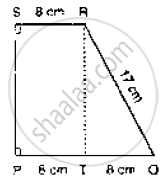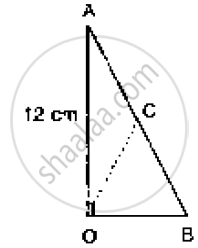Advertisements
Advertisements
Question
Each side of a square is 7 m. If its each side be increased by 3 m, what will be the increase in its area.
Solution
Each side of square = 7 m
∴ Area of square = (side)²= (7m)²
= 7m x 7m = 49m²
∵ Side increased by 3 m
∴ Total length of side will be = 3 m + 7 m = 10m
∴ Area of square = (10 m)²= 10m x 10 m = 100 m²
∴ Increase in area = 100 m² – 49 m² = 51 m²
APPEARS IN
RELATED QUESTIONS
Compute the area of trapezium PQRS is Fig. below.

In the below fig. ∠AOB = 90°, AC = BC, OA = 12 cm and OC = 6.5 cm. Find the area of
ΔAOB.

ABCD is a parallelogram. E is a point on BA such that BE = 2 EA and F is a point on DC
such that DF = 2 FC. Prove that AE CF is a parallelogram whose area is one third of the
area of parallelogram ABCD.
In below fig., PSDA is a parallelogram in which PQ = QR = RS and AP || BQ || CR. Prove
that ar (Δ PQE) = ar (ΔCFD).

In a ΔABC if D and E are mid-points of BC and AD respectively such that ar (ΔAEC) = 4cm2, then ar (ΔBEC) =
Find the area of a square, whose side is: 7.2 cm.
Who had the bigger piece? How much bigger?
Each line gives a story. You have to choose the question which makes the best story problem. The first one is already marked.
- A shopkeeper has 50 boxes. There are 48 fruits in one box.
Tick the one question which matches with the given problem.
Explain why (a) and (c) are not good choices.a) How much will the shopkeeper pay in all? b) How many fruits are there in all? ✓ c) How many more boxes will he need?
Find the area of the following figure by counting squares:

Find the area of the following figure by counting squares:

